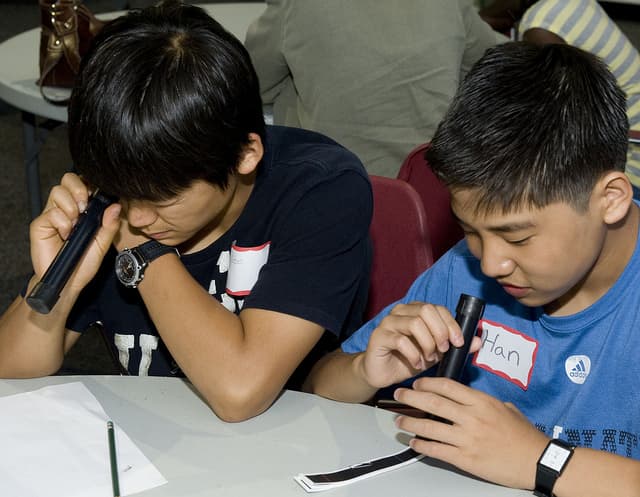The Pocket Spectroscope: A Quick Guide For Gemologists
An inexpensive pocket spectroscope can be great for student gemologists as well as pros who need to identify gems while traveling. Learn the basics here.
1 Minute Read
Question
My granddad was a gemologist. When he passed away 10 years ago, I inherited many of his things, including lots of gemological instruments. One of these is a mystery to me. It's a small instrument about 5 cm in length. It has a sticker down the side that reads "OPL England." At one end is a very fine slit. At the other end is a "viewing hole," (at least that's what I think it is). If I look through the viewing end I can see a spectrum. I assume it's meant to help ID specimens through spectral analysis. But where do I put the stone and the light source?
There's another bit of kit that this tool seems to fit into. It's a black plastic contraption. At the top is a hole and another piece of plastic that turns around. This plastic piece has varying sizes of holes around the top.
I hope my description isn't too vague. Can you help me identify what this is and how to use it correctly?
Thanking you in advance,
Adam
Answer
I recognize this device. It's a pocket spectroscope and stand made by Orwin Products Ltd.
The spectroscope is a fundamental tool for gemologists. To use this instrument, line up these things in this order: light source, stone specimen, pocket spectroscope, and eye. To interpret what you're seeing, you'll need to review the basics of spectroscope operation and gemstone identification.
The black contraption is a stand to help you hold stones of various sizes over the opening. There are some tricks to using this. First, everything has to be held VERY still. Most people prefer using a stand or mount rather than trying to hold the instrument in their hands. (There are even adapters for mounting a pocket spectroscope in a microscope). Second, you need a lot of light. It takes practice to get enough light through the stone and into the pocket spectroscope to be able to read it. You'll find the OPL pocket spectroscope isn't useful for dark stones. Start practicing with something light and one carat or above.
Best wishes,
Donald Clark, CSM IMG
Spectroscope Recommendations
International Gem Society
Related Articles
What is a Gem Reflectometer?
Aquamarine Enhancements
What Is The Difference Between Chert, Flint, And Mozarkite?
Ruby and Sapphire Survey: Where Do You Draw the Line?
Never Stop Learning
When you join the IGS community, you get trusted diamond & gemstone information when you need it.
Get Gemology Insights
Get started with the International Gem Society’s free guide to gemstone identification. Join our weekly newsletter & get a free copy of the Gem ID Checklist!
